Pantheon: The Cornices, Attic and Windows
Above the columns runs the lower cornice or trabeation, interrupted only by the entrance archway. It is white marble, perfectly preserved, with a rich decoration of eggs and darts, rosettes, etc., similar to that of the pro-naos. The upper cornice is simpler and runs the entire circumference of the rotunda, indicating the beginning of the dome proper. The attic, the space between the two cornices, is much changed from what it was in ancient times.
The change was the work of the architect Posi, in the pontificate of Pope Benedict XIV in 1750. Instead of the false windows with porphyry pilasters (which appear in the partial reconstruction of two windows made some years ago by the architect Terenzi, and derived from Renaissance designs, among them one by Raphael), there are now other windows, somewhat recessed, which give the building an austere, but also somewhat sepulchral aspect.
Pantheon: The Vault and Panels
Above the upper cornice, the curving vault is divided into masonry panels, with triple coffering in each. There are five rows of twenty-eight each, or one hundred forty panels in all. In all likelihood, they were once adorned with gilded stucco.
The vault is constructed entirely of brick. The skill with which this1 was done deserves special attention. It is quite perfect and explains why the monument has survived through the centuries in a better state than many buildings of stone. The entire circle of the rotunda rests on a foundation of concrete with layers or shells of travertine. This foundation is fifteen feet high and twenty-four feet wide. The wall of the rotunda (in those points where there are no alcoves) is twenty feet thick and forty feet high to the cornice; in the second storey it is thirty- one feet high. The vault of the cupola is 18’5” thick as it begins, gradually decreasing to a minimum of 4’9” at the aperture. The materials used become progressively lighter and more compact as the height increases.
Pantheon: Pylons, Arches and Small Arches
The entire structure of the church rests on eight pylons, one between each of the eight interior alcoves. Each one is 645 sq. ft. on the surface. The interior is not solid, and is circular in shape and so made that fit increases the strength needed. The division of the thrusts and weight is really remarkable; it is accomplished by means of arches made of bricks, each one two Roman feet. These are visible from the exterior (those of the second storey being stronger because the thrust of the cupola is greater). Similar arches are found in the interior. No beams of any kind have been employed. The entire mass is so cleverly distributed that it forms a single block, with all the parts perfectly articulated, just as though it were a living being.
It is this marvelous construction that has aroused the admiration of architects all through the centuries.
Pantheon: Pavement, High Altar and Choir
The pavement or flooring is in great part the original one, but with various restorations, the last of which was carried out during the Pontificate of Pius IX in 1872. The greater part of it is “pavonazzetto” marble, with alternating squares of “giallo antico” and circles of porphyry and granite.
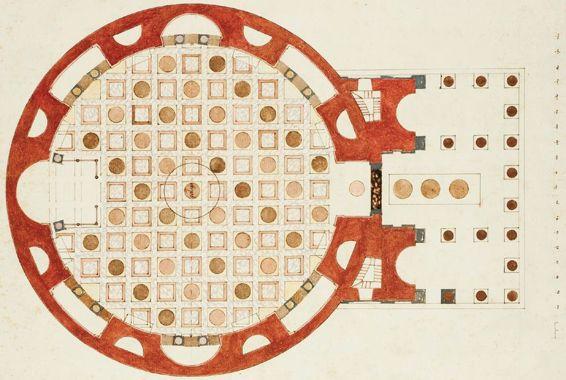
Plan of pavement, niches, and high altar; anonymous seventeenth-century drawing associated with the Bernini workshop. (Biblioteca Apostolica Vaticana, Chigi P VII, 9, 108 recto)
The imposing high altar, constructed of rare marbles, was installed by Pope Clement XI (1700-1721). Behind it is the choir of the canons of neo-classical style, made by Poletti in 1840.
In the center of the apse there is a small cavity containing a painting of the Madonna attributed to St. Luke. It actually dates from the seventh century and is one of the oldest images in Rome. The original is in the interior chapel and may be seen upon request to the custodian. The two baroque statues of saints to the right and left of the high altar are the martyrs Rasius and Anastasius, whose relics are preserved in the church.
The First Chapel: The Chapel of the Cruficix and Veronica
Immediately to the left of the high altar is the chapel of the Crucifix. It was carved in the sixteenth century of cedar-wood. The chapel also contains a bust of Cardinal Rivarola and a monument executed by Thorwaldsen, with the bust of Cardinal Ercole Consalvi, who was Cardinal Deacon of the Pantheon. The commemorative plaques record the finding of the remains of Raphael, the great Renaissance painter, in 1833.
Pantheon: The Tomb of Raphael
The visitor will notice the next shrine, the Madonna of the Rock, by Lorenzo Lotti, usually called Lorenzetto. The statue was commissioned by Raphael himself, who chose to be buried in this spot. He was at one time in charge of the classical monuments of Rome and a great admirer of the Pantheon. Hence his desire to be buried here.
He left a legacy for Masses to be celebrated, which is still in existence. In the 19th century a doubt arose about his remains and a search was made which led to the finding of his bones, which were perfectly preserved. They were then placed in an ancient sarcophagus, formerly in the Vatican Museums, upon which were inscribed the Latin verses, composes by Cardinal Bembo:
« I lie hie est Raphael, timuit quo sospite vinci Rerum magna parens, et, moriente, mori ».
Without reference to Raphael, Alexander Pope has translated this, in his Epitaph on Sir Godfrey Kneller, as follows:
Living, great Nature feared he might outvie Her works; and, dying, fears herself to die.
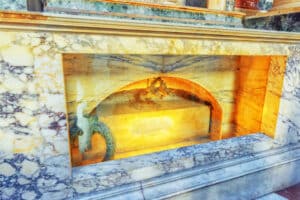
Inside interior of the Pantheon, is a former Roman temple, now a church, in Rome,Raphael’s grave. Italy.
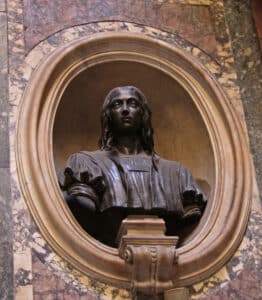
The bust of Raphael (Raffaello Sanzio da Urbino) that sits above his coffin, in his resting place in the Pantheon in Rome, Italy.
The commemorative plaque to the right of the tomb of Raphael memorializes Maria Bibbiena, niece of the famous Cardinal Bibbiena, who was engaged to marry the painter, but died before the wedding; the stone to the left commemorates the painter, Annibale Caracci. The bust of Raphael is the work of the sculptor Fabris in 1833.
Pantheon: The Holy Land Chapel of the Academy « Dei Virtuosi »
The rectangular chapel to the left of the royal tombs is dedicated to St. Joseph and the Holy Land and is the center of the Confraternity (now Academy) of the “ Virtuosi ” of the Pantheon, founded in 1543. It has numbered among its members, in past centuries, the most illustrious artists, sculptors, and architects. Many commemorative stones of various members are located in the chapel, which is also dedicated to the Holy Land because of the earth brought from there by the founder of the Confraternity, Desiderio Adiutorio, (1481-1556) canon of the church, son of Peter of Segni.
Pantheon: The First and Last Chapels on the Right
The rectangular chapel on the right just as you enter contains a beautiful fresco of the Annunciation, an exquisite work attributed by many experts to Melozzo da Forli, but by some to Antoniazzo Romano. The chapel nearest to the altar has a fine fresco of the Madonna of Clemency, with St. Francis of Assisi and St. John the Baptist. It is a work of the school of Perugino in the fifteenth century.
Pantheon: Ancient Ceremonies and Feasts. The Golden Rose
The Pantheon has had a glorious history over the centuries of worship and sacred ceremonies. As already indicated, the Feast of All Saints on November 1 began in the Pantheon, dedicated to Mary, Queen of Martyrs. The Popes used to celebrate Holy Mass here at various times during the year, particularly on the Fourth Sunday of Lent, Laetare Sunday. It was their custom to bless the Golden Rose on that Sunday and then send it to various Catholic kings in recognition of their merits. It was the custom, too, on the feasts of the Ascension and Assumption, at the Gloria of the Mass, to cause a statue of Our Lord, on the Ascension, and of His Blessed Mother, on the Assumption, to rise by means of an ingenious mechanism from the altar and pass out through the aperture in the roof.
Explore Our Pantheon Photo Gallery:

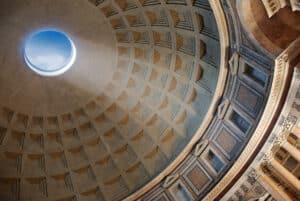
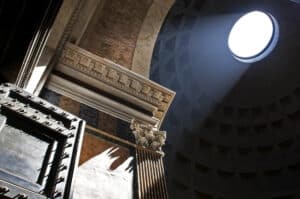
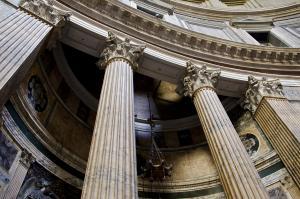

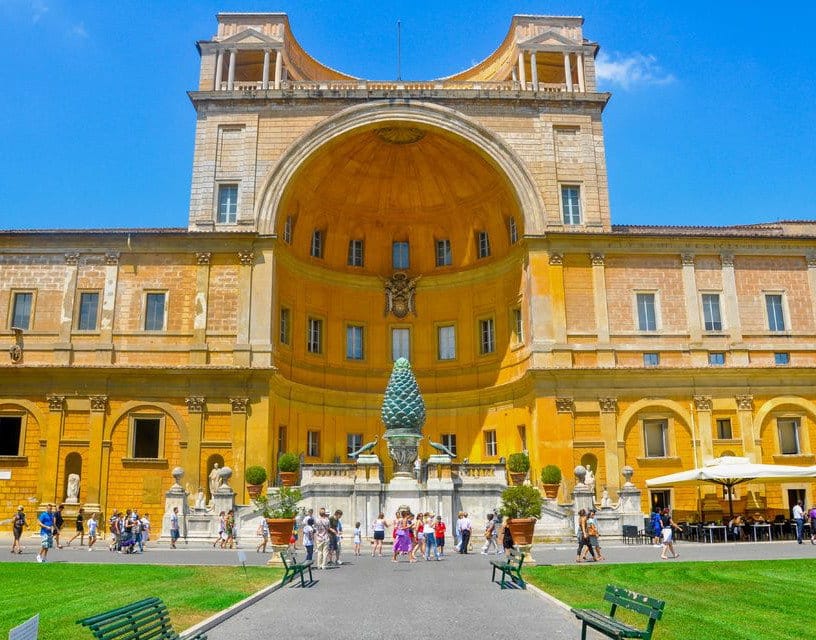
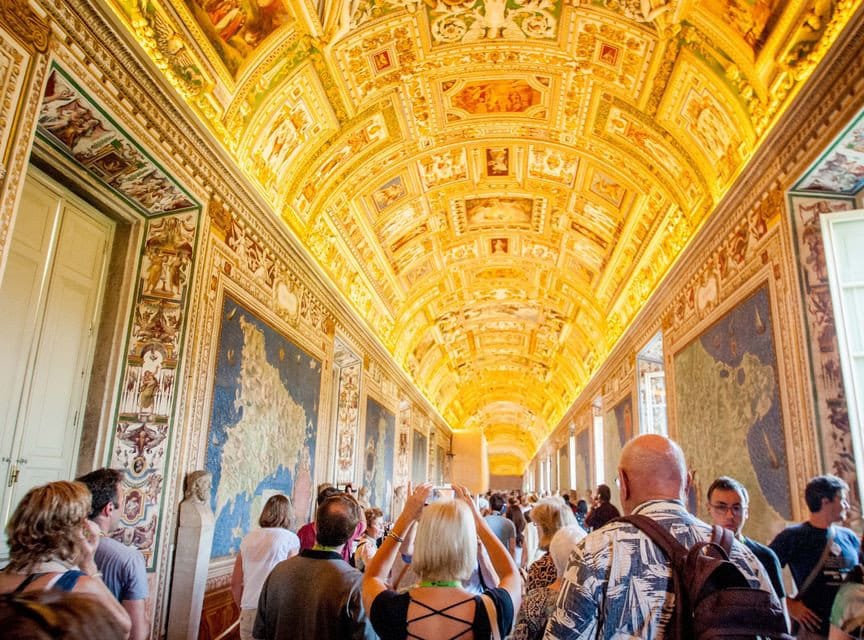
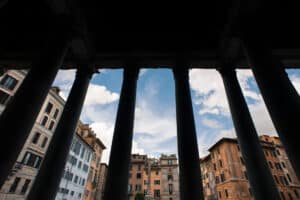
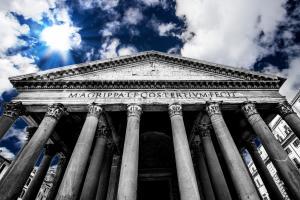
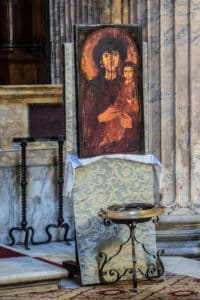
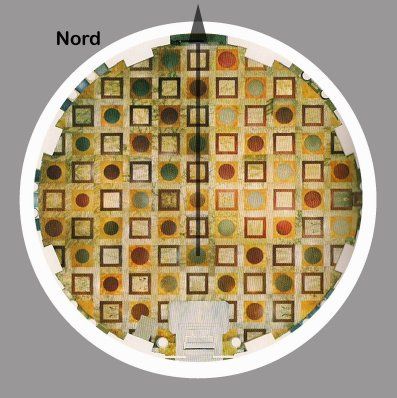
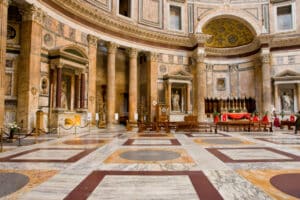

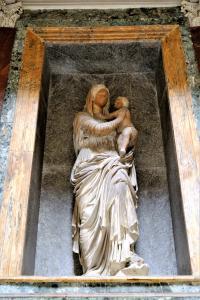
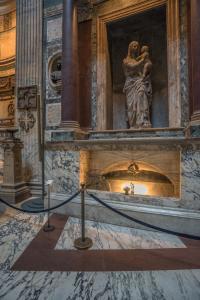
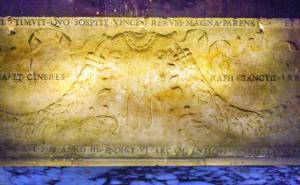
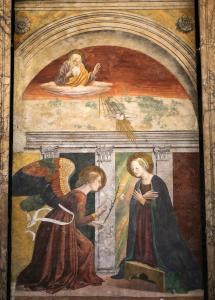
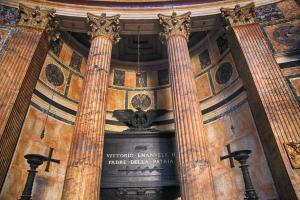

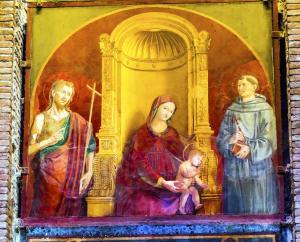
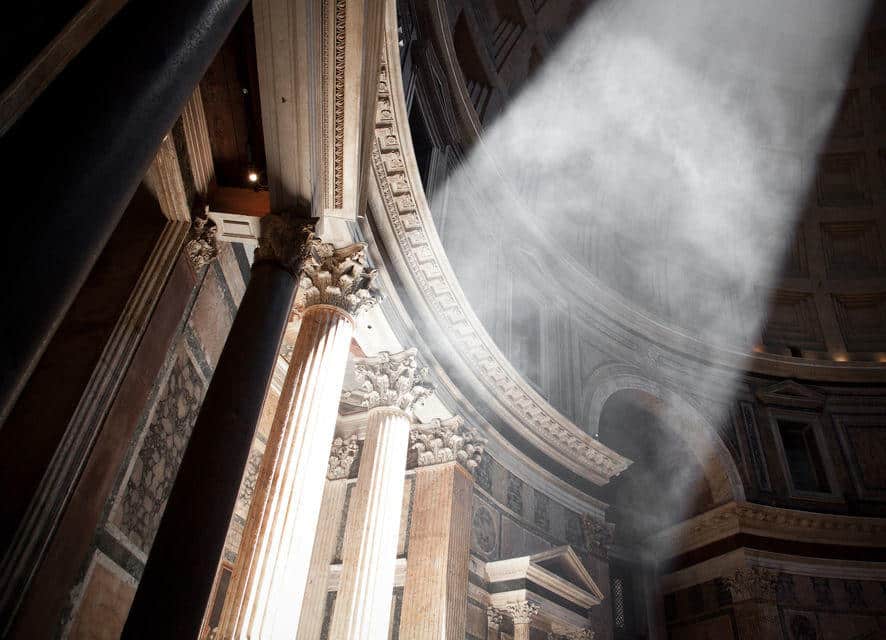
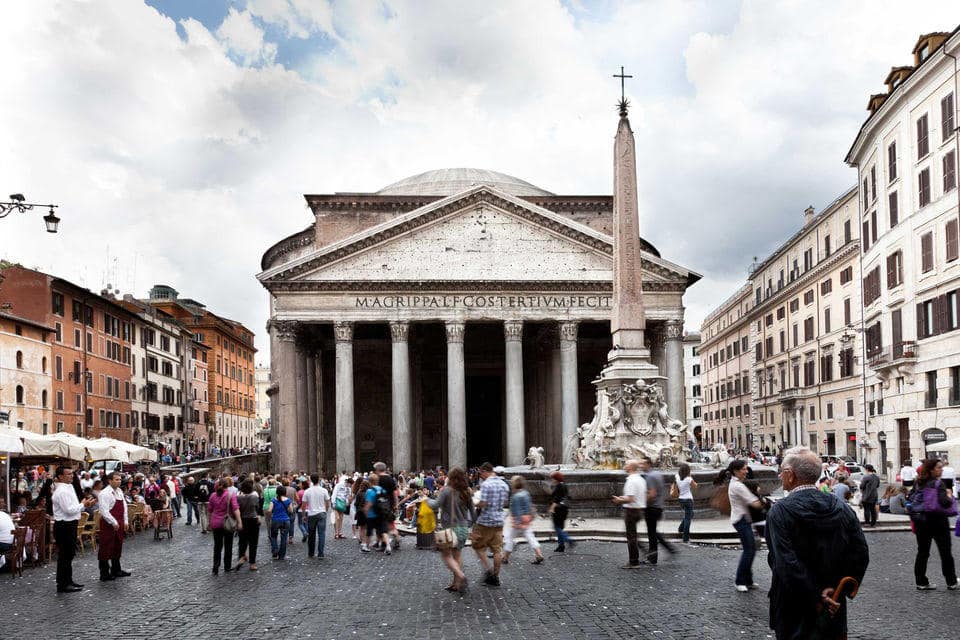
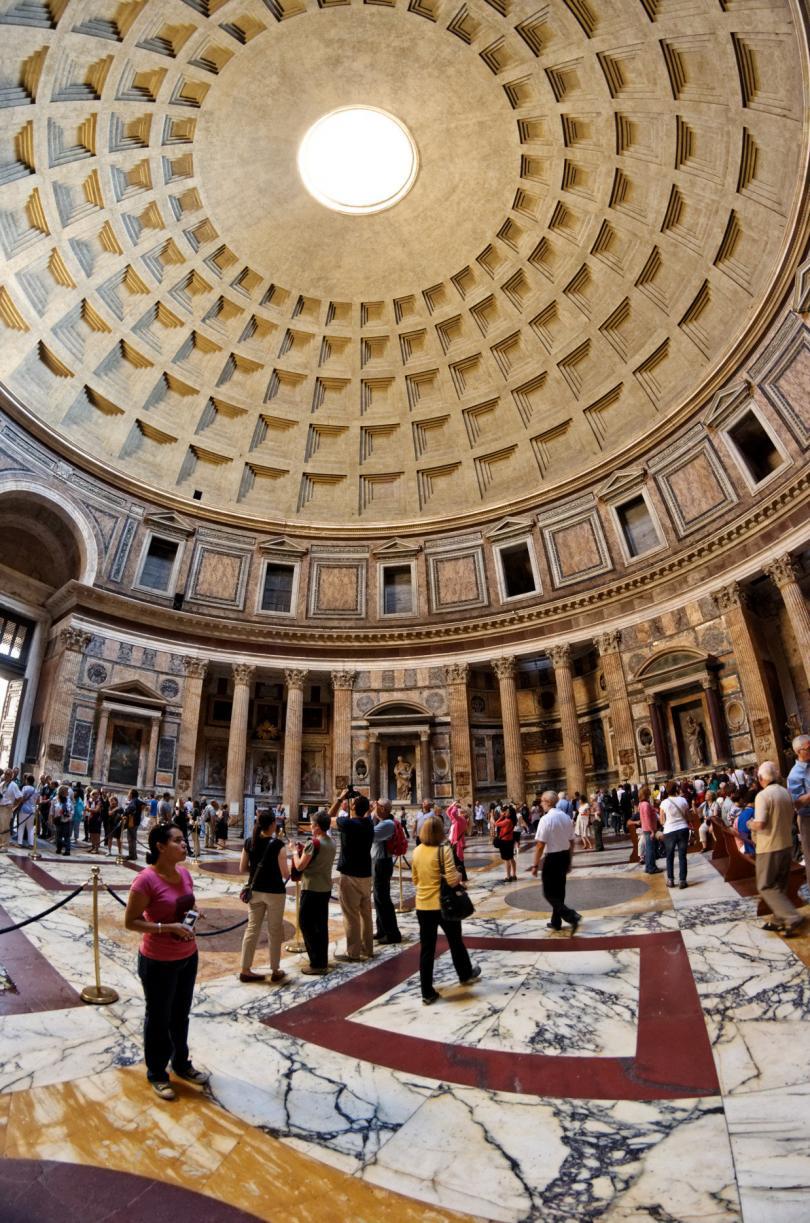
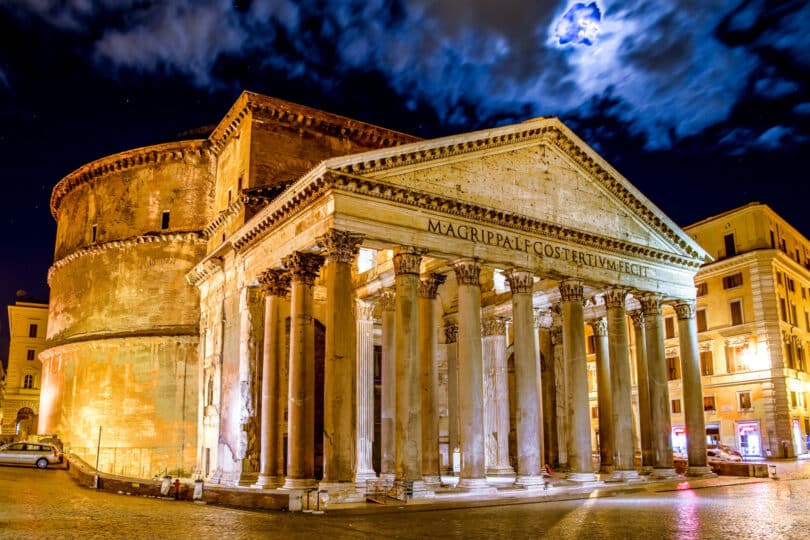
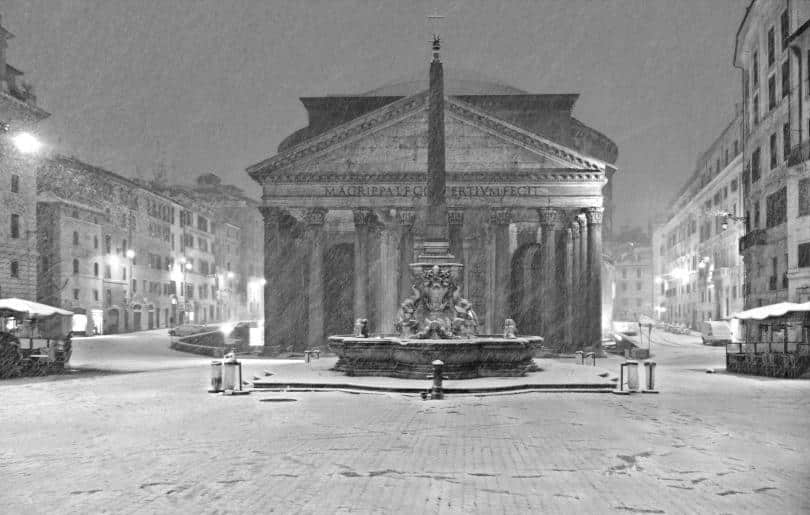
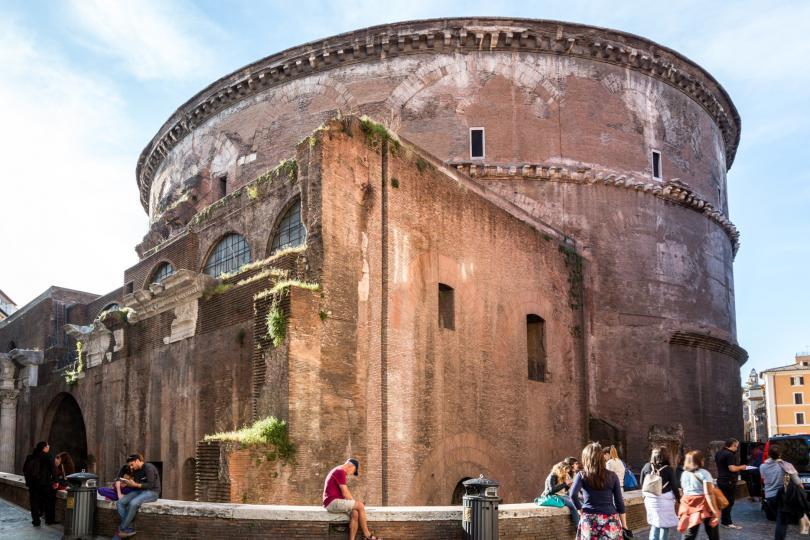
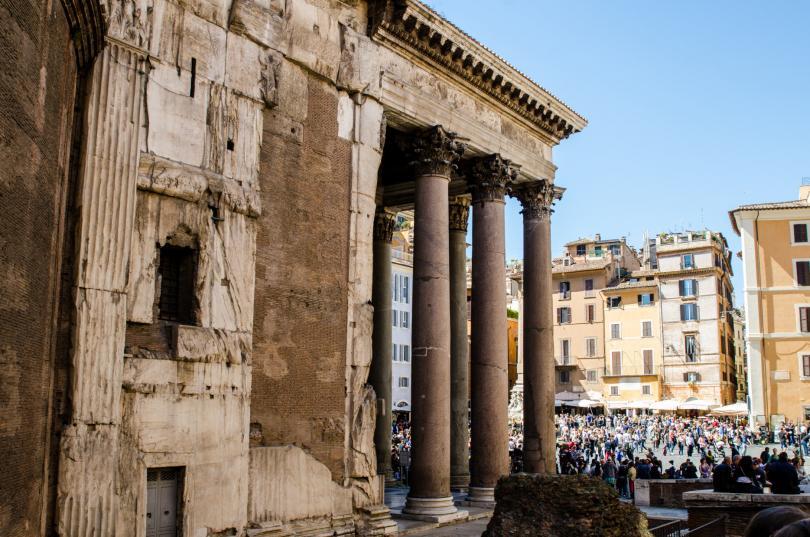
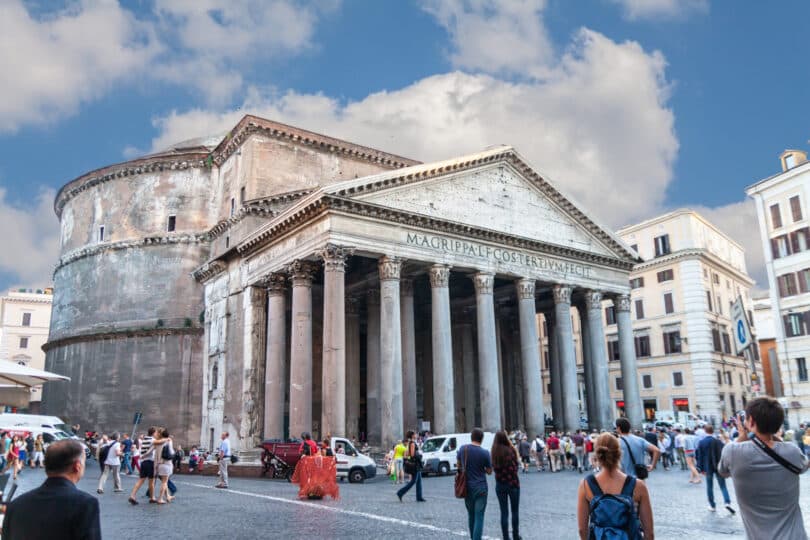
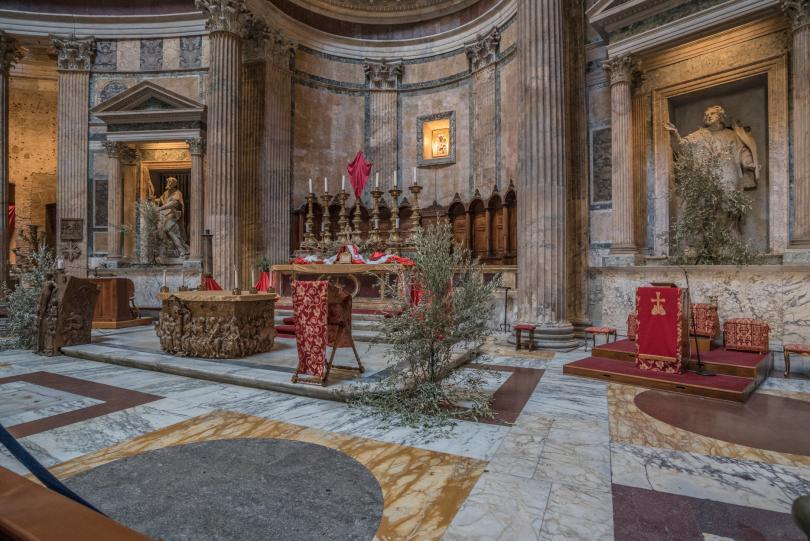
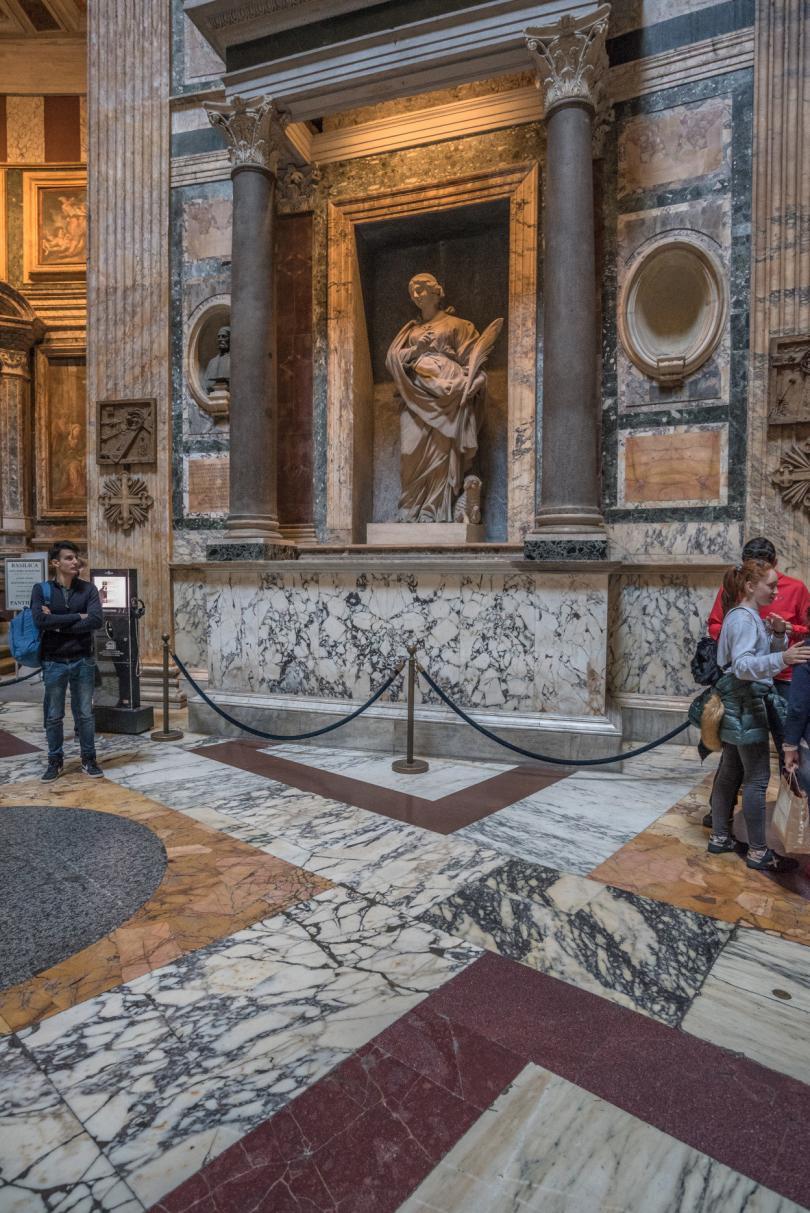

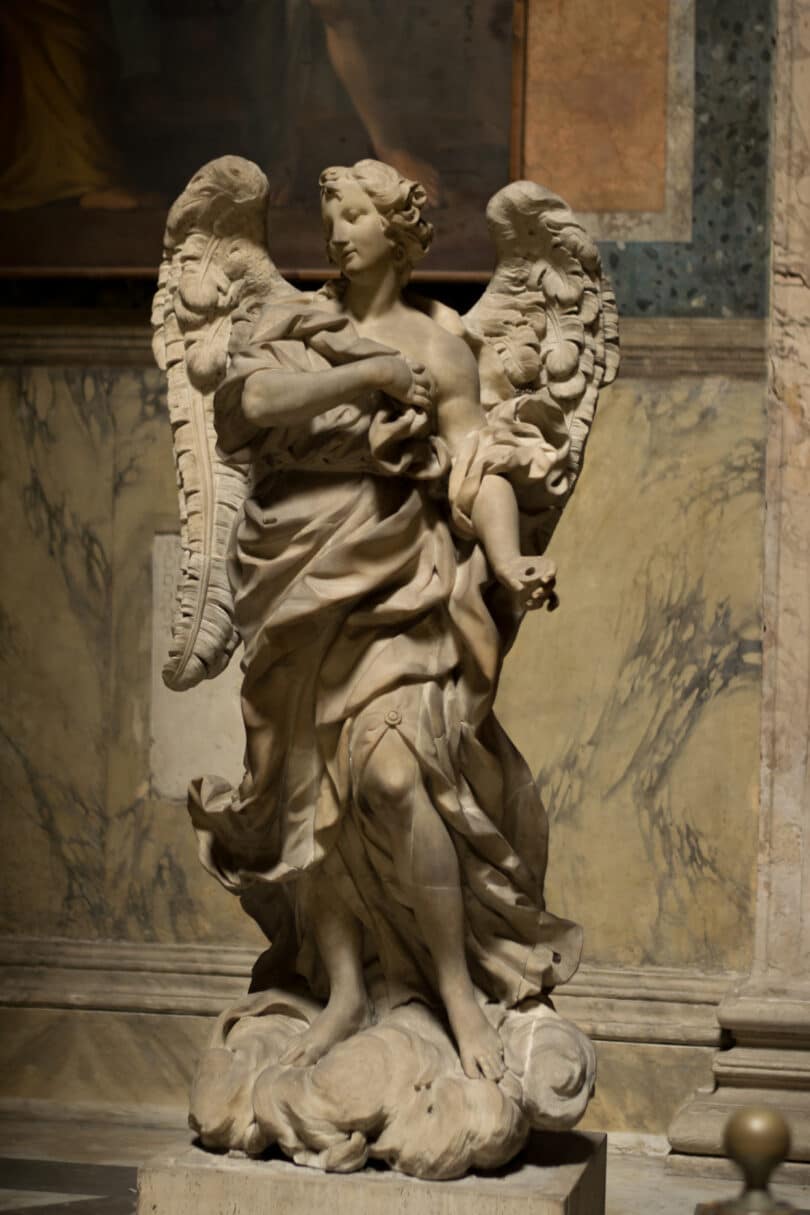

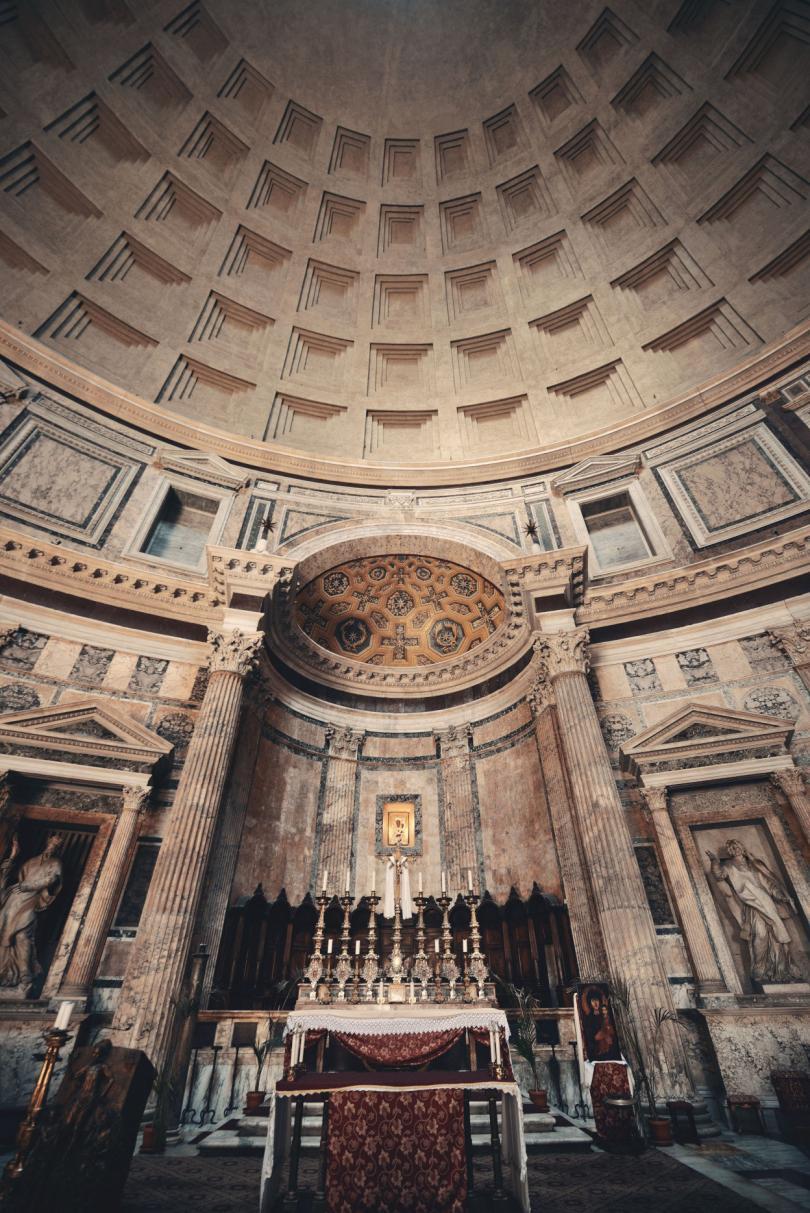
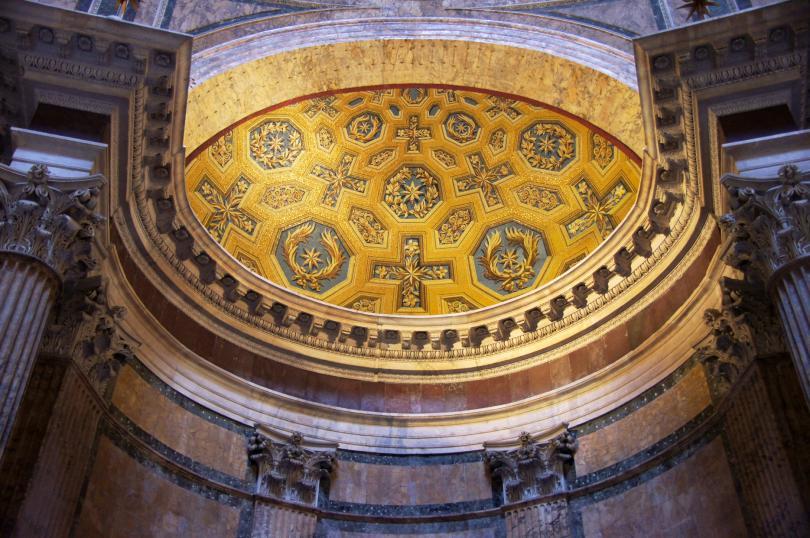


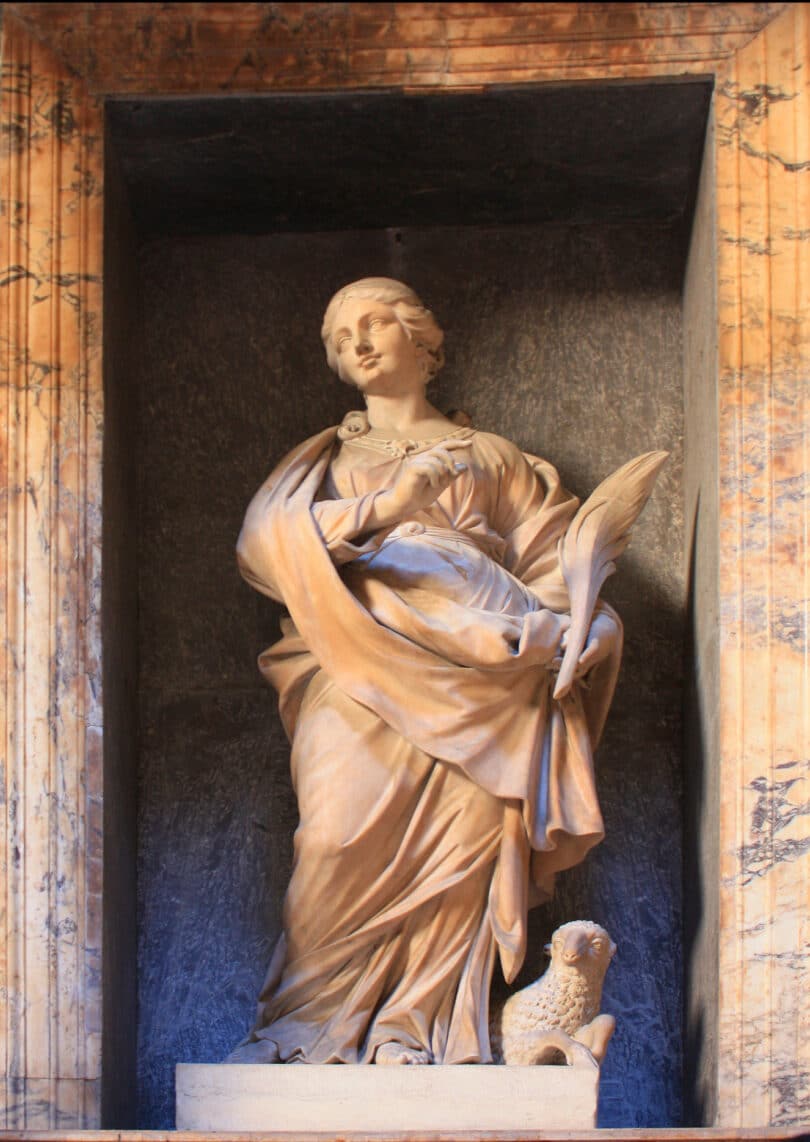

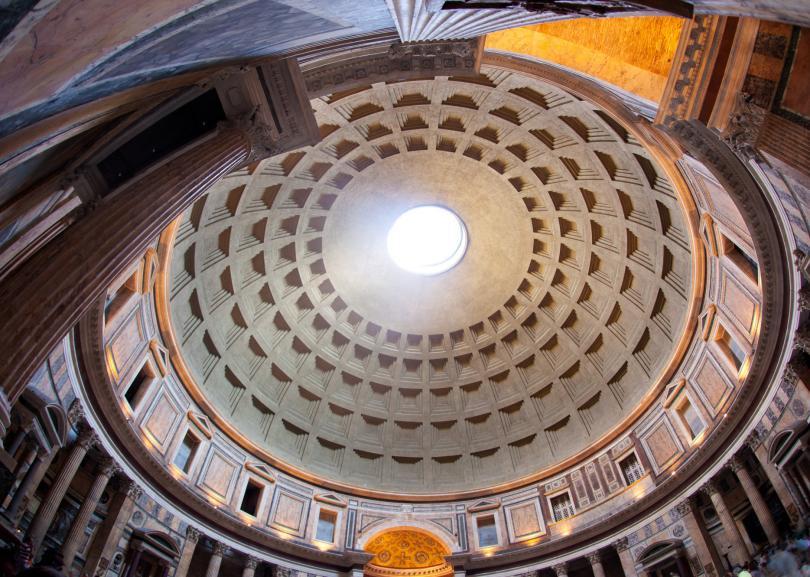
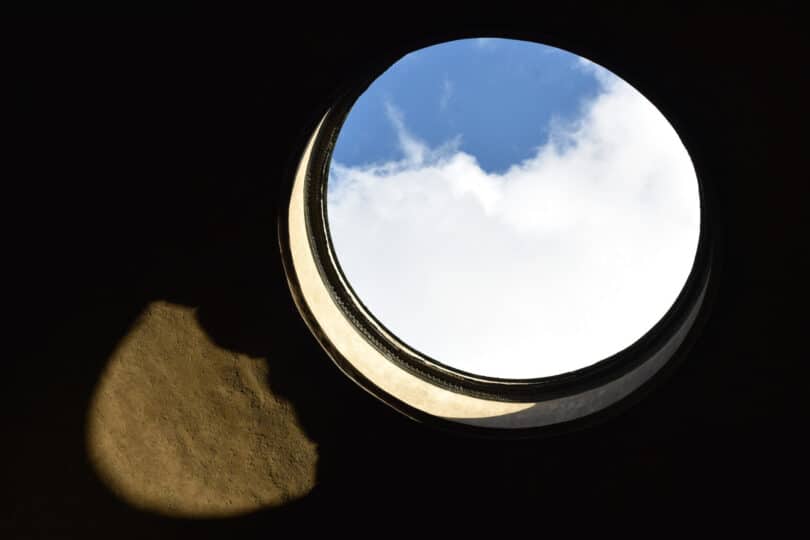
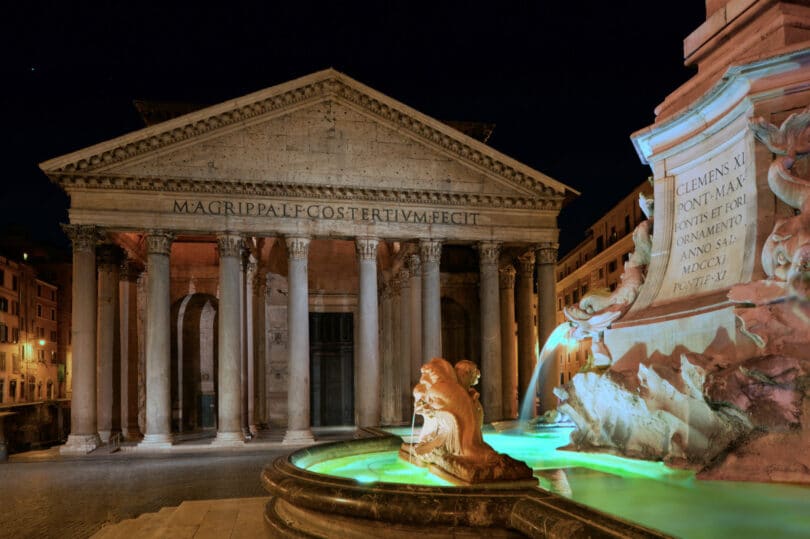
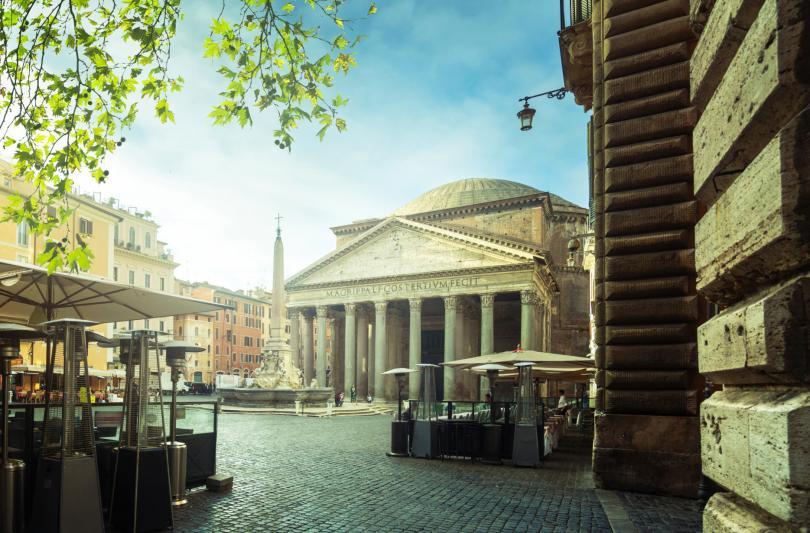
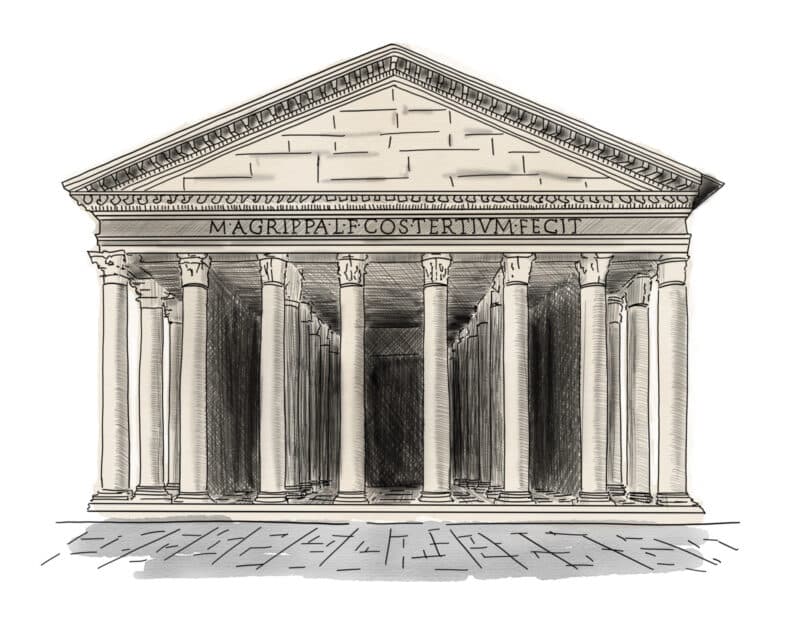

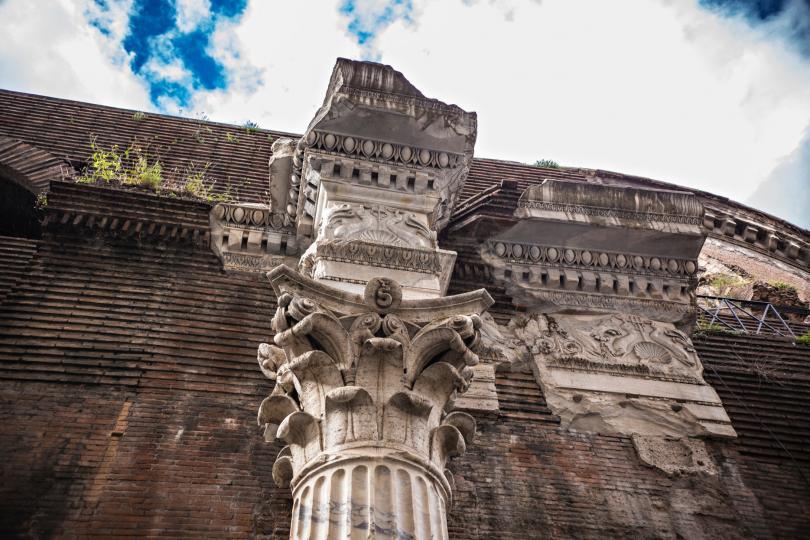

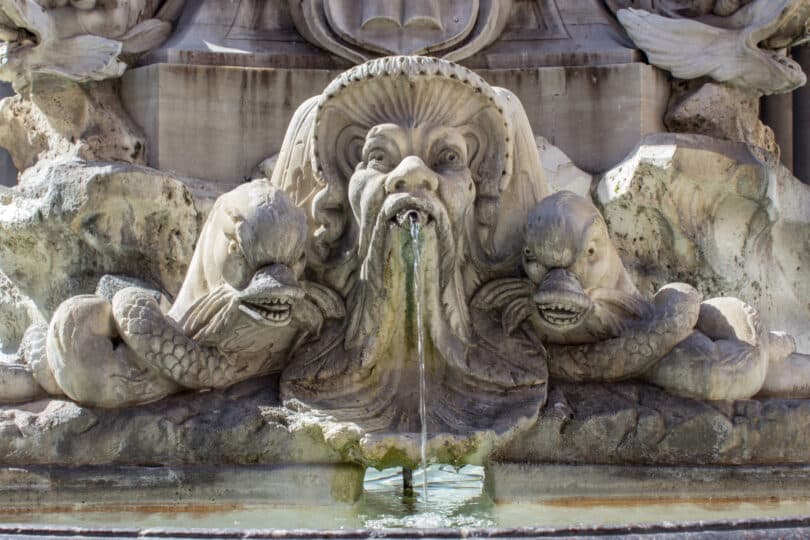
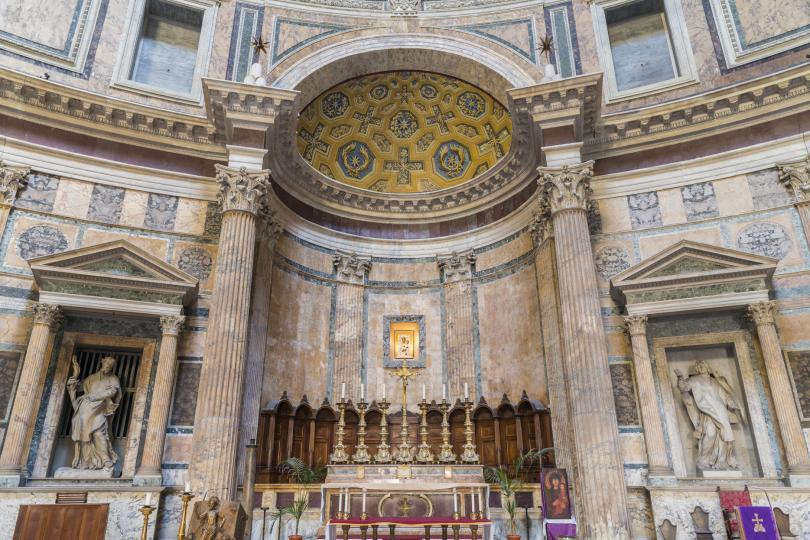
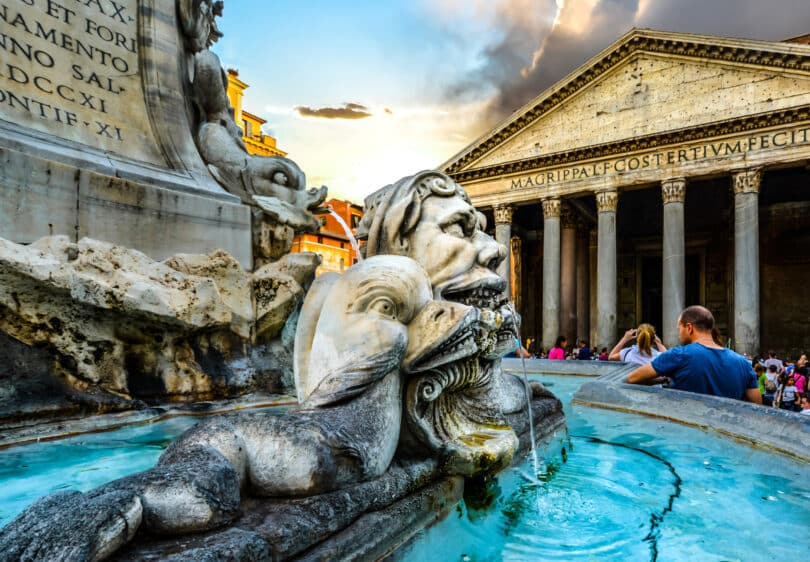

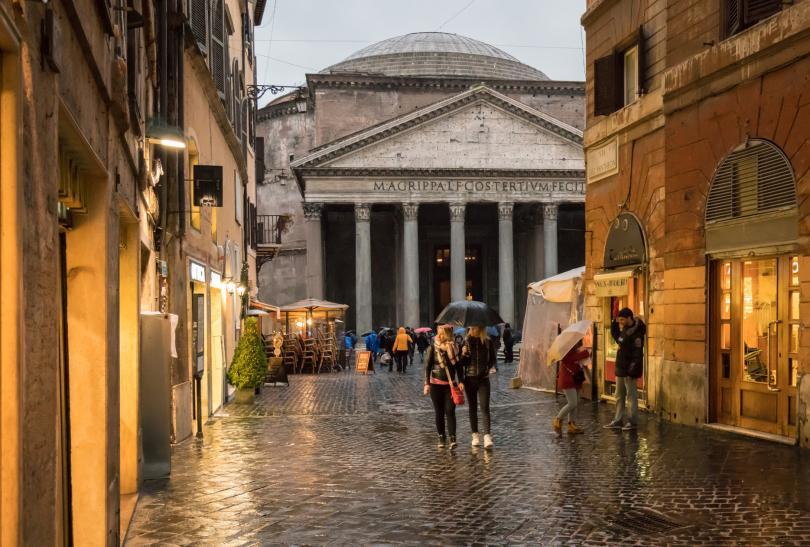

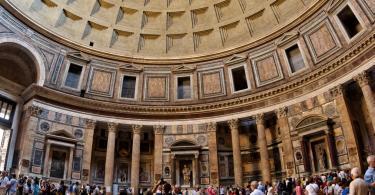
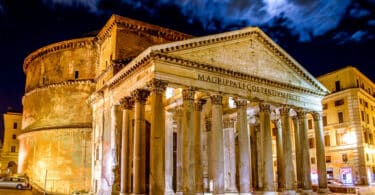
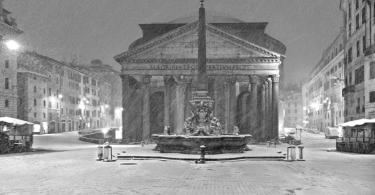
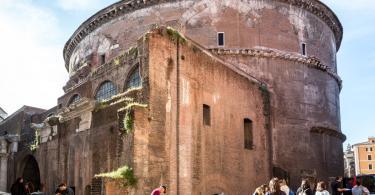
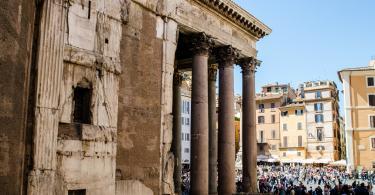
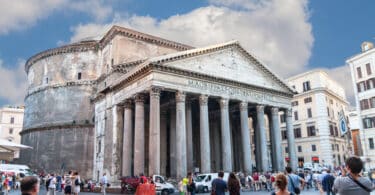
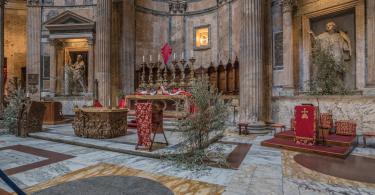
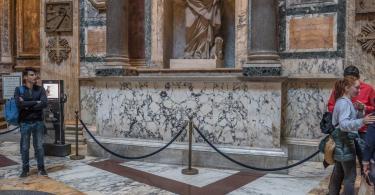
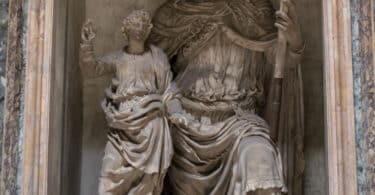
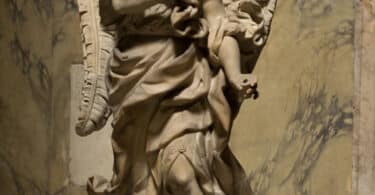
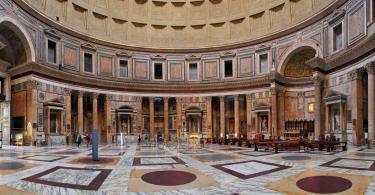
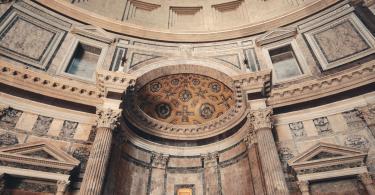
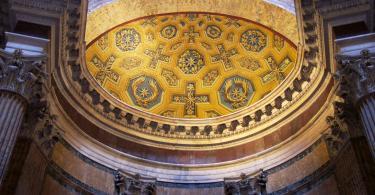
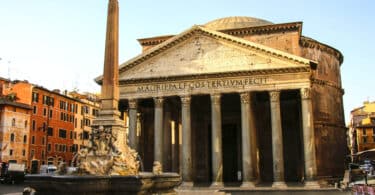
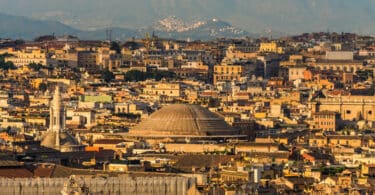

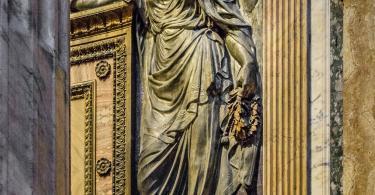
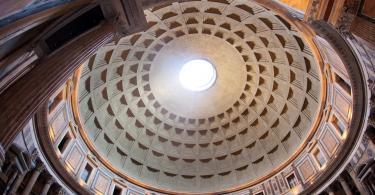
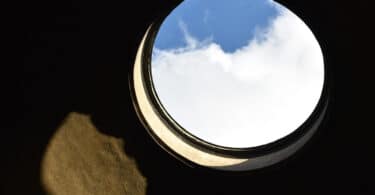

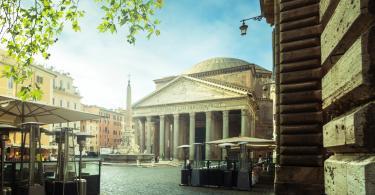
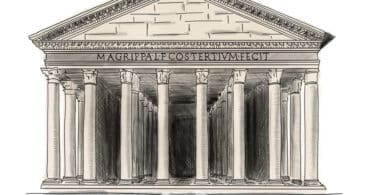
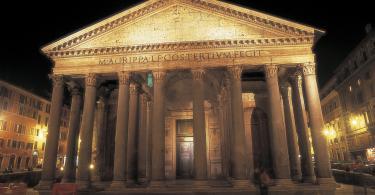
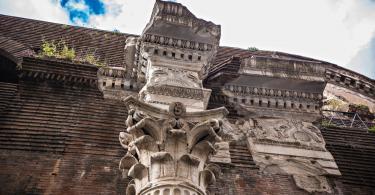


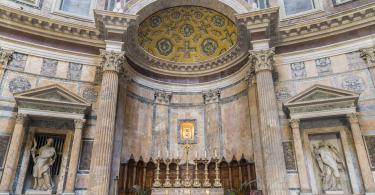
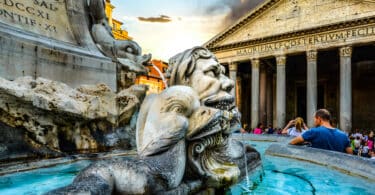


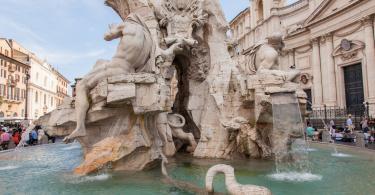
Leave a Comment